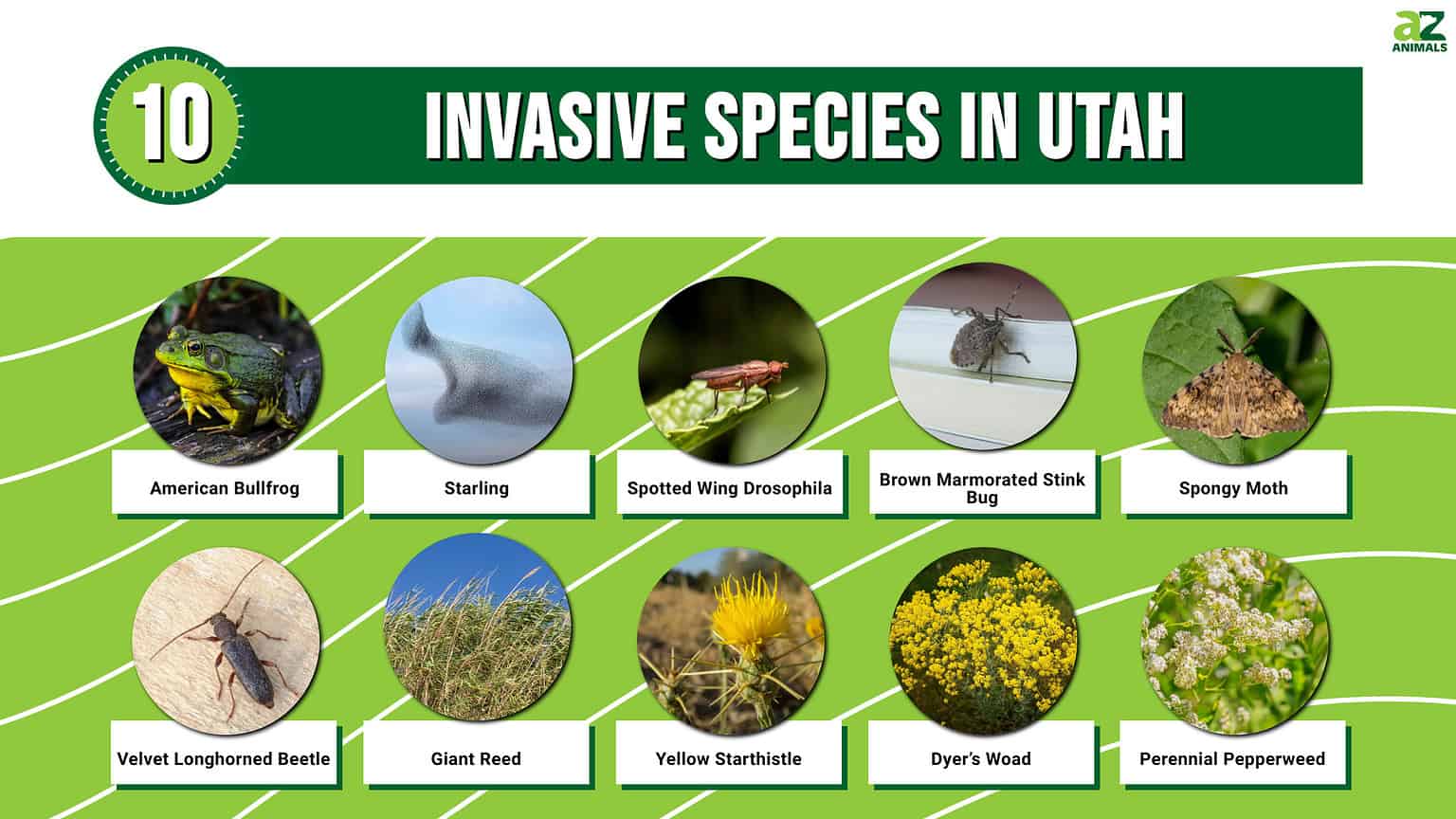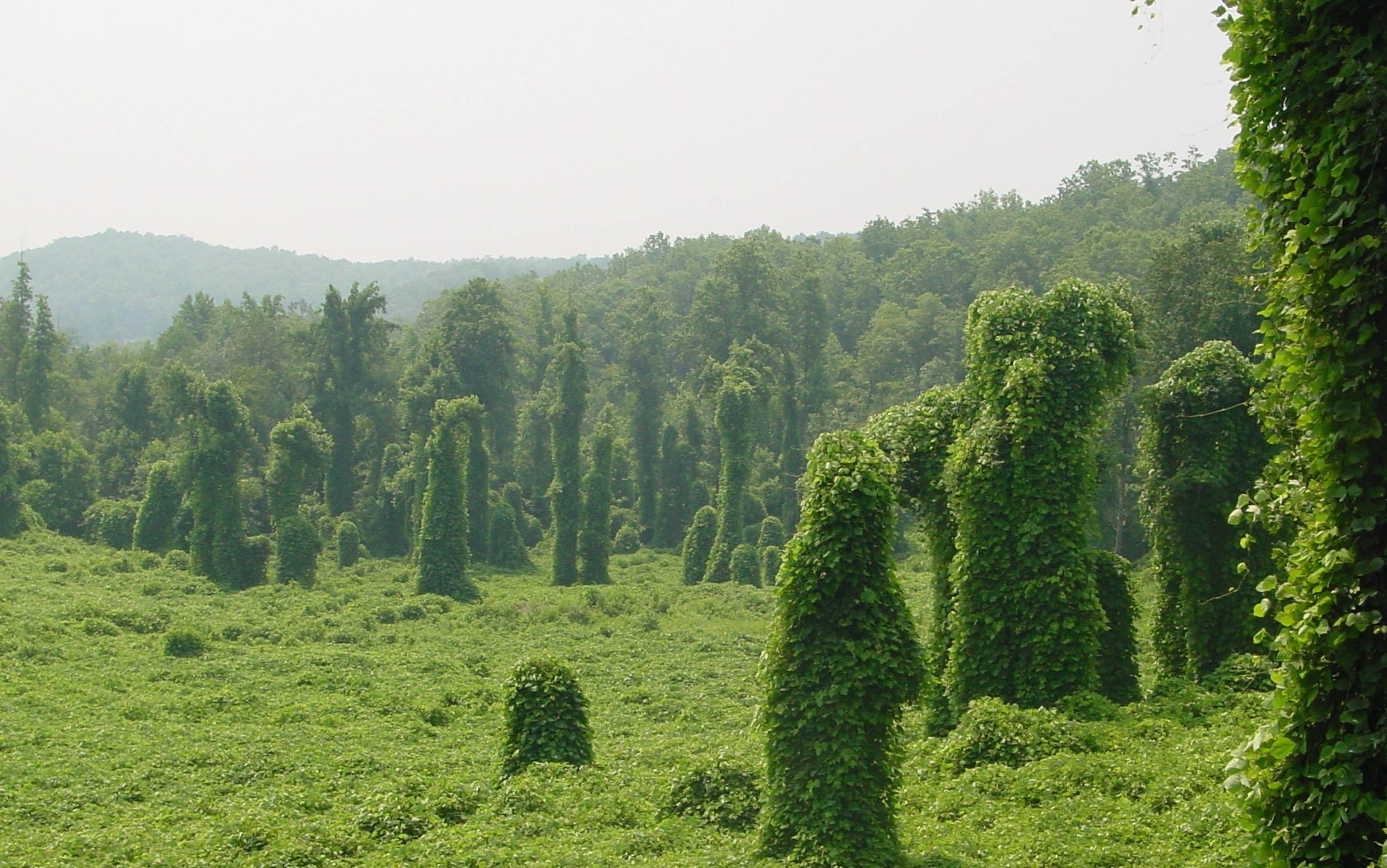Invasive plants in Utah pose a significant threat to the state’s ecosystems and economy. These non-native species aggressively spread, outcompeting native plants for resources and disrupting natural habitats. Understanding the impact and implementing effective control strategies are crucial for preserving Utah’s unique biodiversity and agricultural productivity.
This comprehensive guide provides an in-depth exploration of invasive plants in Utah, including their identification, ecological and economic consequences, and the various management strategies employed to combat their spread.
Invasive Plant Identification and Impact

Invasive plant species are non-native plants that have been introduced to Utah and have become a threat to the state’s ecosystems and agriculture. These plants can outcompete native species for resources such as water, sunlight, and nutrients, and can also alter the structure and function of ecosystems.
Invasive plants, non-native species that aggressively spread and harm local ecosystems, are a pressing concern in Utah. However, for those seeking greenery in low-light conditions, consider a low light hanging plant . These plants thrive in shaded areas, making them ideal for indoor or covered patios.
While invasive plants pose a threat to Utah’s delicate environment, low light hanging plants offer a sustainable and aesthetically pleasing solution for low-light spaces.
Some of the most common invasive plant species found in Utah include:
- Cheatgrass (Bromus tectorum): Cheatgrass is an annual grass that was introduced to Utah in the late 1800s. It is now found throughout the state, and is a major fire hazard. Cheatgrass is highly flammable, and its fires can spread quickly and burn large areas of land.
- Tamarisk (Tamarix ramosissima): Tamarisk is a shrub or small tree that was introduced to Utah in the early 1900s. It is now found along rivers and streams throughout the state. Tamarisk can form dense stands that crowd out native vegetation and reduce water flow. It can also increase soil salinity, making it difficult for other plants to grow.
- Russian olive (Elaeagnus angustifolia): Russian olive is a tree that was introduced to Utah in the late 1800s. It is now found throughout the state, and is a major invader of riparian areas. Russian olive can form dense stands that crowd out native vegetation and reduce water flow. It can also produce large amounts of fruit, which can attract wildlife and spread the plant to new areas.
The ecological and economic impacts of invasive plants in Utah are significant. Invasive plants can reduce biodiversity, alter ecosystem structure and function, and increase the risk of wildfires. They can also damage crops and reduce agricultural productivity. The economic costs of invasive plants in Utah are estimated to be in the millions of dollars each year.
Invasive plants in Utah, such as cheatgrass and knapweed, threaten native ecosystems. One way to combat these invasive species is to plant native alternatives, such as the extra large snake plant ( extra large snake plant ). This plant is not only attractive but also helps to improve air quality and reduce erosion.
By choosing native plants over invasive species, we can help to protect Utah’s unique environment.
Invasive Plant Species in Utah
The following table lists some of the most common invasive plant species found in Utah, their origins, and the areas they’ve invaded:
| Species | Origin | Areas Invaded |
|---|---|---|
| Cheatgrass (Bromus tectorum) | Eurasia | Throughout Utah |
| Tamarisk (Tamarix ramosissima) | Eurasia | Along rivers and streams throughout Utah |
| Russian olive (Elaeagnus angustifolia) | Eurasia | Throughout Utah, especially riparian areas |
| Canada thistle (Cirsium arvense) | Europe | Throughout Utah, especially in disturbed areas |
| Yellow starthistle (Centaurea solstitialis) | Europe | Throughout Utah, especially in rangelands |
| Spotted knapweed (Centaurea stoebe) | Europe | Throughout Utah, especially in rangelands |
| Leafy spurge (Euphorbia esula) | Europe | Throughout Utah, especially in disturbed areas |
| Dalmatian toadflax (Linaria dalmatica) | Europe | Throughout Utah, especially in disturbed areas |
Control and Management Strategies: Invasive Plants In Utah

Invasive plant management in Utah employs a multifaceted approach that encompasses chemical, mechanical, and biological control methods. Each strategy has its own advantages and limitations, and the choice of method depends on factors such as the target species, site conditions, and available resources.
Chemical Control
Chemical control involves the application of herbicides to kill or suppress invasive plants. Herbicides can be selective, targeting specific plant species while leaving desirable vegetation unharmed, or non-selective, affecting all plants within the treated area. The effectiveness of chemical control depends on factors such as the herbicide’s selectivity, application timing, and environmental conditions.
One successful example of chemical control in Utah is the use of imazapyr to manage yellow starthistle (Centaurea solstitialis). Imazapyr is a selective herbicide that targets broadleaf plants, including yellow starthistle, while sparing grasses and other desirable vegetation. Its application has significantly reduced yellow starthistle infestations in rangelands and other natural areas.
Mechanical Control
Mechanical control involves the physical removal or destruction of invasive plants using methods such as mowing, tilling, hand-pulling, or burning. These methods are often labor-intensive and may require multiple treatments to achieve effective control.
An example of successful mechanical control in Utah is the use of mowing to manage cheatgrass (Bromus tectorum) in sagebrush ecosystems. Regular mowing prevents cheatgrass from producing seeds, reducing its spread and allowing native vegetation to recover.
Biological Control
Biological control involves the introduction of natural enemies, such as insects, pathogens, or grazing animals, to control invasive plants. These agents can feed on, attack, or compete with the invasive species, reducing its population and impact.
One successful example of biological control in Utah is the use of the cinnabar moth (Tyria jacobaeae) to manage tansy ragwort (Jacobaea vulgaris). The cinnabar moth larvae feed on tansy ragwort, reducing its growth and seed production. Its introduction has significantly reduced tansy ragwort infestations in pastures and disturbed areas.
Best Practices for Invasive Plant Management in Utah
Effective invasive plant management in Utah requires a comprehensive approach that includes prevention, early detection, and rapid response. Here are some best practices to consider:
- Prevention: Inspect incoming materials, such as plants, soil, and equipment, for invasive species and take steps to prevent their introduction.
- Early Detection: Regularly monitor natural areas and report any suspected invasive plant infestations promptly to the appropriate authorities.
- Rapid Response: Implement control measures as soon as possible to prevent invasive plants from spreading and establishing.
- Integrated Management: Combine multiple control methods, such as chemical, mechanical, and biological control, to achieve the most effective and sustainable results.
- Adaptive Management: Monitor the effectiveness of control measures and adjust strategies as needed based on results.
Restoration and Conservation Efforts

In Utah, substantial efforts are underway to restore native plant communities and conserve biodiversity threatened by invasive plants. These initiatives involve active restoration projects, community engagement, and educational campaigns.
Community involvement is vital in these endeavors, with volunteers participating in restoration projects, monitoring efforts, and educational outreach. Partnerships between government agencies, non-profit organizations, and private landowners are crucial for coordinating restoration efforts and sharing resources.
Successful Restoration Projects, Invasive plants in utah
Utah has witnessed several successful restoration projects that demonstrate the effectiveness of invasive plant management and native plant restoration. One notable example is the restoration of riparian ecosystems along the Virgin River in Zion National Park.
- Techniques Used: Mechanical removal of invasive tamarisk and Russian olive, followed by revegetation with native cottonwood, willow, and seepwillow.
- Ecological Benefits: Restored riparian habitat improved water quality, provided wildlife habitat, and enhanced recreational opportunities.
Another successful project is the restoration of sagebrush steppe in the Great Basin. This project involved:
- Techniques Used: Controlled burns to remove invasive cheatgrass, followed by seeding with native sagebrush and grasses.
- Ecological Benefits: Restored sagebrush steppe improved habitat for sage-grouse and other wildlife, and increased carbon sequestration.

Invasive plants pose a significant threat to Utah’s ecosystems, outcompeting native species for resources and altering habitats. Among these invasive plants, the jade plant (Crassula ovata) is particularly concerning due to its ability to thrive in various conditions. The jade plant’s curly leaves, a distinctive feature caused by environmental stress or genetic variations, as discussed in detail here , contribute to its resilience in Utah’s diverse environments.
Understanding the factors influencing the jade plant’s success is crucial for developing effective management strategies to mitigate its negative impacts on Utah’s native flora.